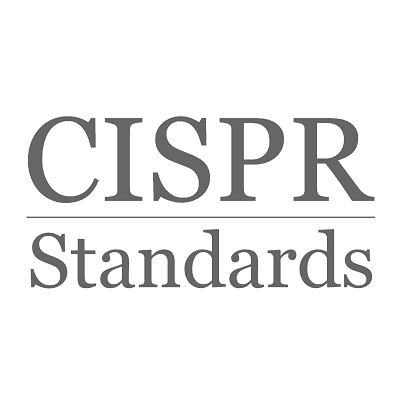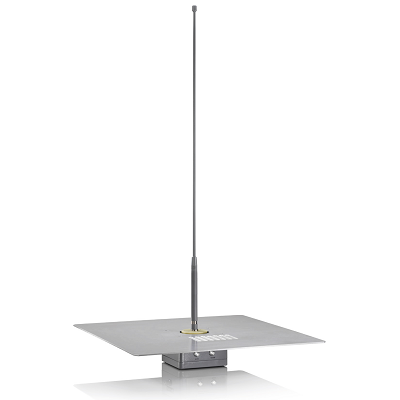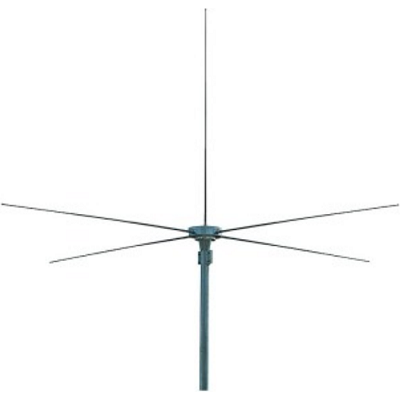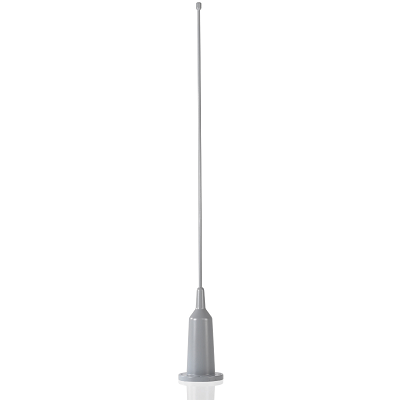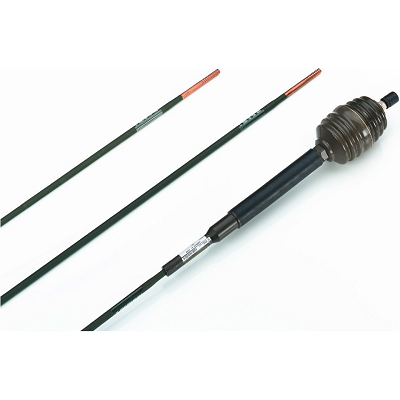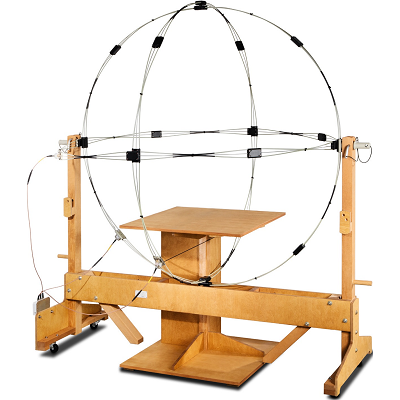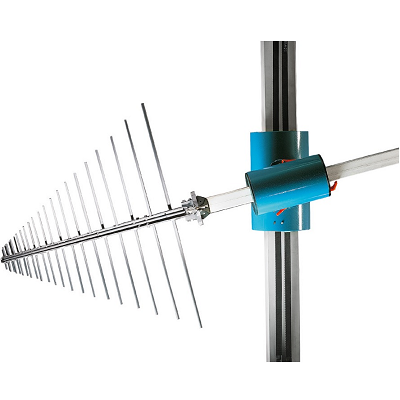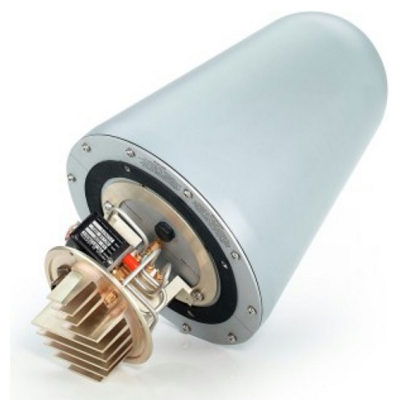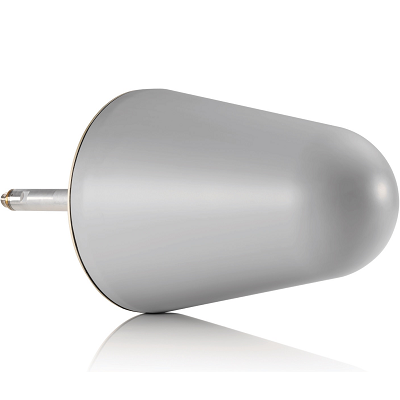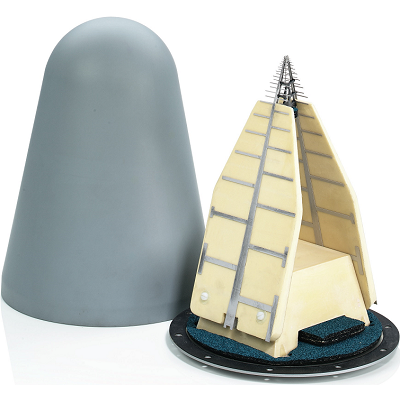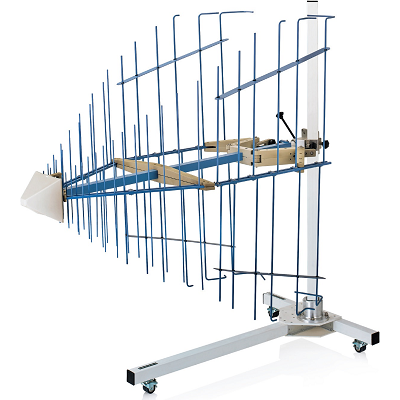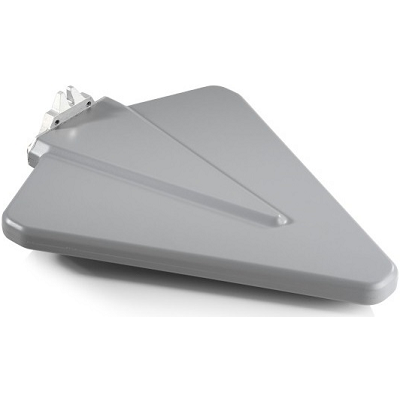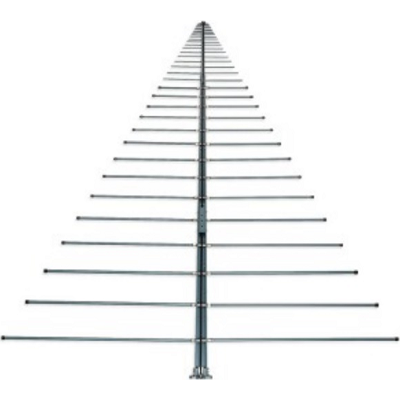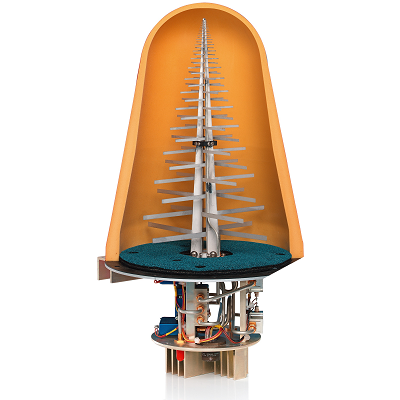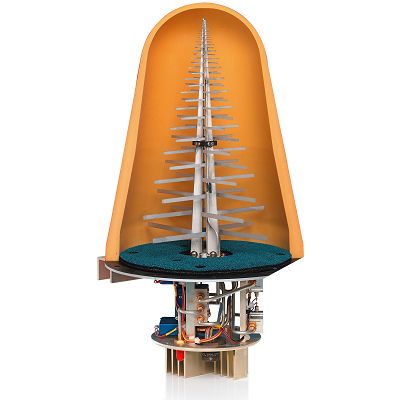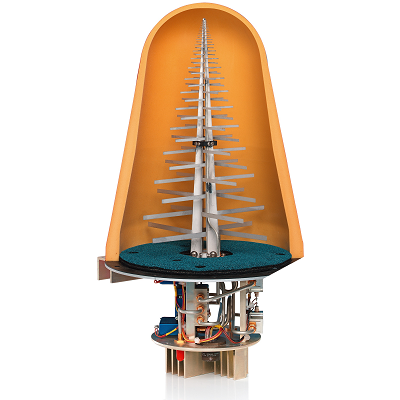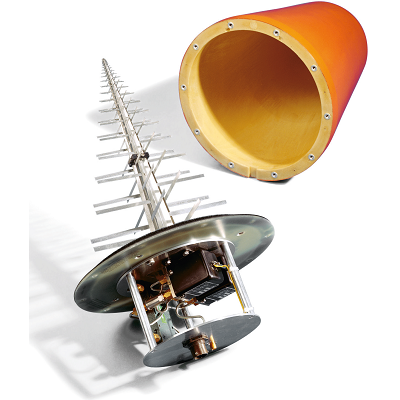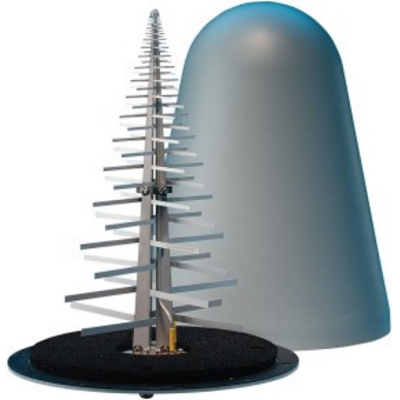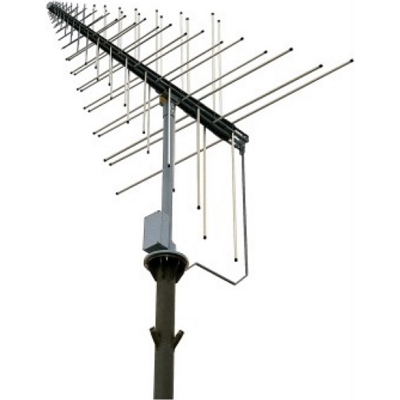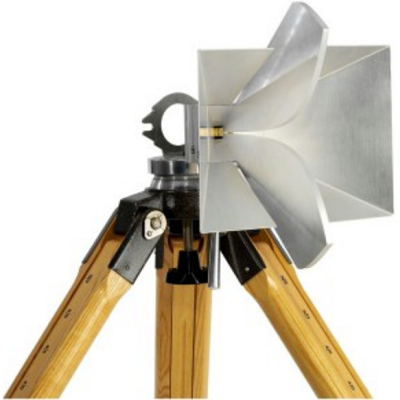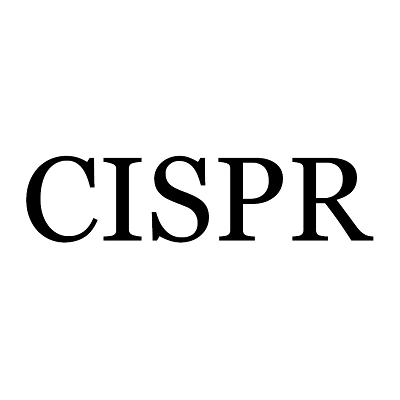
CISPR 11
CISPR 11 Industrial, Scientific and Medical Equipment - Radio-Frequency Disturbance Characteristics - Limits and Methods of Measurement The purpose of this standard applies to industrial, scientific and medical electrical equipment operating in the frequency range 0 Hz to 400 GHz and to domestic and similar appliances designed to generate and/or use locally radio-frequency energy. This standard covers emission requirements related to radio-frequency (RF) disturbances in the frequency range of 9 kHz to 400 GHz. Measurements need only be performed in frequency ranges where limits are specified in Clause 6. This standard covers emission requirements related to radio-frequency disturbances in the frequency range of 9 kHz to 18 GHz. Requirements for ISM RF lighting equipment and UV irradiators operating at frequencies within the ISM frequency bands defined by the ITU Radio Regulations are contained in this standard. Equipment covered by other CISPR product and product family emission standards are excluded from the scope of this standard. Preview Standard

CISPR 12
CISPR 12 Vehicles, Boats and Internal Combustion Engines - Radio Disturbance Characteristics - Limits and Methods of Measurement for the Protection of Off-Board Receivers The limits in this International Standard are designed to provide protection for broadcast receivers in the frequency range of 30 MHz to 1 000 MHz when used in the residential environment. Compliance with this standard may not provide adequate protection for new types of radio transmissions or receivers used in the residential environment nearer than 10 m to the vehicle, boat or device. This standard applies to the emission of electromagnetic energy which may cause interference to radio reception and which is emitted from a) vehicles propelled by an internal combustion engine, electrical means or both; b) boats propelled by an internal combustion engine, electrical means or both. Boats are to be tested in the same manner as vehicles except where they have unique characteristics as explicitly stated in this standard; c) devices equipped with internal combustion engines. Preview Standard

CISPR 13
CISPR 13 Sound and Television Broadcast Receivers and Associated Equipment - Radio Disturbance Characteristics - Limits and Methods of Measurement -Â CSV Withdrawn The purpose of this standard applies to the generation of electromagnetic energy from sound and television receivers for the reception of broadcast and similar transmissions and from associated equipment. Describes the methods of measurement applicable to sound and television receivers or associated equipment and specifies limits for the control of disturbance from such equipment. The frequency range covered extends from 9 kHz to 400 GHz. Preview Standard

CISPR 14-1
CISPR 14-1 Electromagnetic Compatibility - Requirements for Household Appliances, Electric Tools and Similar Apparatus - Part 1: Emission CISPR 14-1 specifies the requirements that apply to the emission of radio-frequency disturbances in the frequency range 9 kHz to 400 GHz from appliances, electric tools and similar apparatus, whether powered by AC or DC (including a battery). Also included in the scope of this standard are separate parts of the above mentioned equipment such as motors and switching devices (e.g. power or protective relays); however, no emission requirements apply to such separate parts, unless otherwise stated in this standard. Preview Standard

CISPR 14-2
CISPR 14-2 Electromagnetic Compatibility - Requirements for Household Appliances, Electric Tools and Similar Apparatus - Part 2: Immunity - Product Family Standard The purpose of this standard applies to the electromagnetic immunity of appliances and similar apparatus for household and similar purposes that use electricity, as well as electric toys and electric tools, the rated voltage of the apparatus being not more than 250 V for single-phase apparatus to be connected to phase and neutral and 480 V for other apparatus. Apparatus may incorporate motors, heating elements or their combination, may contain electric or electronic circuitry, and may be powered by the mains, by transformer, by batteries, or by any other electrical power source. Apparatus not intended for household use, but which nevertheless may require the immunity level, such as apparatus intended to be used by laymen in shops, in light industry and on farms, are within the scope of this standard, as far as they are included in CISPR 14-1. Preview Standard

CISPR 15
CISPR 15 Limits and Methods of Measurement of Radio Disturbance Characteristics of Electrical Lighting and Similar Equipment The purpose of this standard applies to the emission (radiated and conducted) of radio frequency disturbances from all lighting equipment with a primary function of generating and/or distributing light intended for illumination purposes, and intended either for connection to the low voltage electricity supply or for battery operation; the lighting part of multi-function equipment where one of the primary functions of this is illumination; independent auxiliaries exclusively for use with lighting equipment; UV and IR radiation equipment; neon advertising signs; street/flood lighting intended for outdoor use; and transport lighting (installed in buses and trains). Preview Standard

CISPR 16-1-1
CISPR 16-1-1 Specification for Radio Disturbance and Immunity Measuring Apparatus and Methods -Part 1-1: Radio Disturbance and Immunity Measuring Apparatus - Measuring Apparatus The purpose of this standard specifies the characteristics and performance of equipment for the measurement of radio disturbance voltages, currents and fields in the frequency range 9 kHz to 18 GHz. In addition, requirements are specified for specialized equipment for discontinuous disturbance measurements including the quasi-peak measuring receiver, the peak measuring receiver, the average measuring receiver, and the r.m.s. measuring receiver. The specifications in this standard apply to EMI receivers and spectrum analyzers. The term “measuring receiver†used in this standard refers to both EMI receivers and spectrum analyzers. Preview Standard

CISPR 16-1-2
CISPR 16-1-2 Specification for Radio Disturbance and Immunity Measuring Apparatus and Methods - Part 1-2: Radio Disturbance and Immunity Measuring Apparatus - Ancillary Equipment - Conducted Disturbances The purpose of this standard specifies the characteristics and performance of equipment for the measurement of radio disturbance voltages and currents in the frequency range 9 kHz to 1 GHz. Specifications for ancillary apparatus are included for: artificial mains networks, current and voltage probes and coupling units for current injection on cables. Preview Standard

CISPR 16-1-3
CISPR 16-1-3 Specification for Radio Disturbance and Immunity Measuring Apparatus and Methods - Part 1-3: Radio Disturbance and Immunity Measuring Apparatus - Ancillary Equipment - Disturbance Power The purpose of this standard specifies the characteristics and calibration of the absorbing clamp for the measurement of radio disturbance power in the frequency range 30 MHz to 1 GHz. Preview Standard

CISPR 16-1-4
CISPR 16-1-4 Specification for Radio Disturbance and Immunity Measuring Apparatus and Methods - Part 1-4: Radio Disturbance and Immunity Measuring Apparatus - Ancillary Equipment - Radiated Disturbances The purpose of this standard specifies the characteristics and performance of equipment for the measurement of radiated disturbances in the frequency range 9 kHz to 18 GHz. Specifications for ancillary apparatus are included for: antennas and test sites, TEM cells, and reverberating chambers. Preview Standard

CISPR 16-2-1
CISPR 16-2-1 Specification for Radio Disturbance and Immunity Measuring Apparatus and Methods - Part 2-1: Methods of Measurement of Disturbances and Immunity - Conducted Disturbance Measurements The purpose of this standard specifies the methods of measurement of disturbance phenomena in general in the frequency range 9 kHz to 18 GHz and especially of conducted disturbance phenomena in the frequency range 9 kHz to 30 MHz. With a CDNE, the frequency range is 9 kHz to 300 Hz. Preview Standard

CISPR 16-2-2
CISPR 16-2-2 Specification for Radio Disturbance and Immunity Measuring Apparatus and Methods - Part 2-2: Methods of Measurement of Disturbances and Immunity - Measurement of Disturbance Power The purpose of this standard specifies the methods of measurement of disturbance power using the absorbing clamp in the frequency range 30 MHz to 1000 MHz. CISPR 16-2 has been reorganized into 4 parts, to accommodate growth and easier maintenance. Preview Standard

CISPR 16-2-3
CISPR 16-2-3 Specification for Radio Disturbance and Immunity Measuring Apparatus and Methods - Part 2-3: Methods of Measurement of Disturbances and Immunity - Radiated Disturbance Measurements The purpose of this CISPR 16-2-3 standard specifies the methods of measurement of radiated disturbance phenomena in the frequency range 9 kHz to 18 GHz. The aspects of measurement uncertainty are specified in CISPR 16-4-1 and CISPR 16-4-2. Preview Standard

CISPR 22
CISPR 22 Information Technology Equipment - Radio Disturbance Characteristics - Limits and Methods of Measurement - Withdrawn The purpose of this standard specifies the methods of measurement of the levels of spurious signals generated by the ITE and limits are specified for the frequency range 9 kHz to 400 GHz for both class A and class B equipment. Â No measurements need be performed at frequencies where no limits are specified. Note: this publication has been replaced by CISPR 32:2015 Preview Standard - CISPR 22:2008 Preview Standard - CISPR 32:2015

CISPR 24
CISPR 24 Information Technology Equipment - Immunity Characteristics - Limits and Methods of Measurement The purpose of this standard is to establish requirements that will provide an adequate level of intrinsic immunity so that the equipment will operate as intended in its environment. It establishes the immunity test requirements for equipment within its scope in relation to continuous and transient conducted and radiated disturbances, including electrostatic discharges (ESD). Procedures are defined for the measurement of ITE and limits are specified which are developed for ITE within the frequency range from 0 Hz to 400 GHz. Preview Standard

CISPR 25
CISPR 25 Radio Disturbance Characteristics for the Protection of Receivers Used On Board Vehicles, Boats, And On Devices - Limits and Methods of Measurement The purpose of this CISPR 25 standard is to establish limit and procedures for the measurement of radio disturbances in the frequency range of 150 kHz to 1,000 MHz. The standard applies to any electronic/electrical component intended for use in vehicles and devices. Â The limits are intended to provide protection for receivers installed in a vehicle from disturbances produced by components/modules in the same vehicle. Preview Standard

CISPR 32
CISPR 32 Electromagnetic Compatibility (EMC) - Multimedia Equipment - Radio Disturbance Characteristics - Limits and Methods of Measurement This CISPR 32 standard applies to multimedia equipment (MME) as defined in 3.1.24 and having a rated r.m.s. AC or DC supply voltage not exceeding 600 V. It covers two classes of MME (Class A and Class B). The MME classes are specified in Clause 4. The objectives of this standard are:
- Establish requirements which provide an adequate level of protection of the radio spectrum, allowing radio services to operate as intended in the frequency range 9 kHz to 400 GHz
- Specify procedures to ensure the reproducibility of measurement and the repeatability of results

